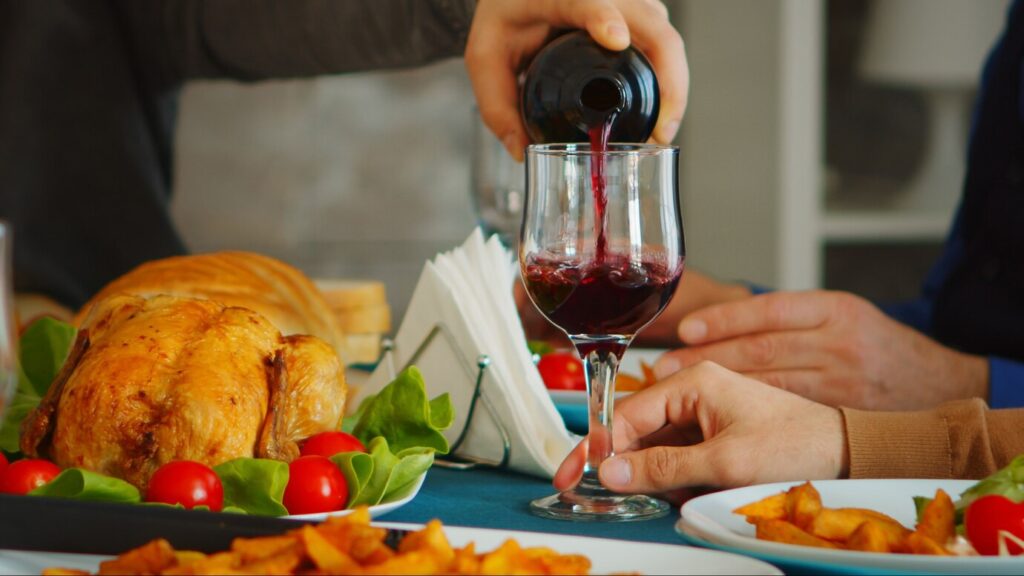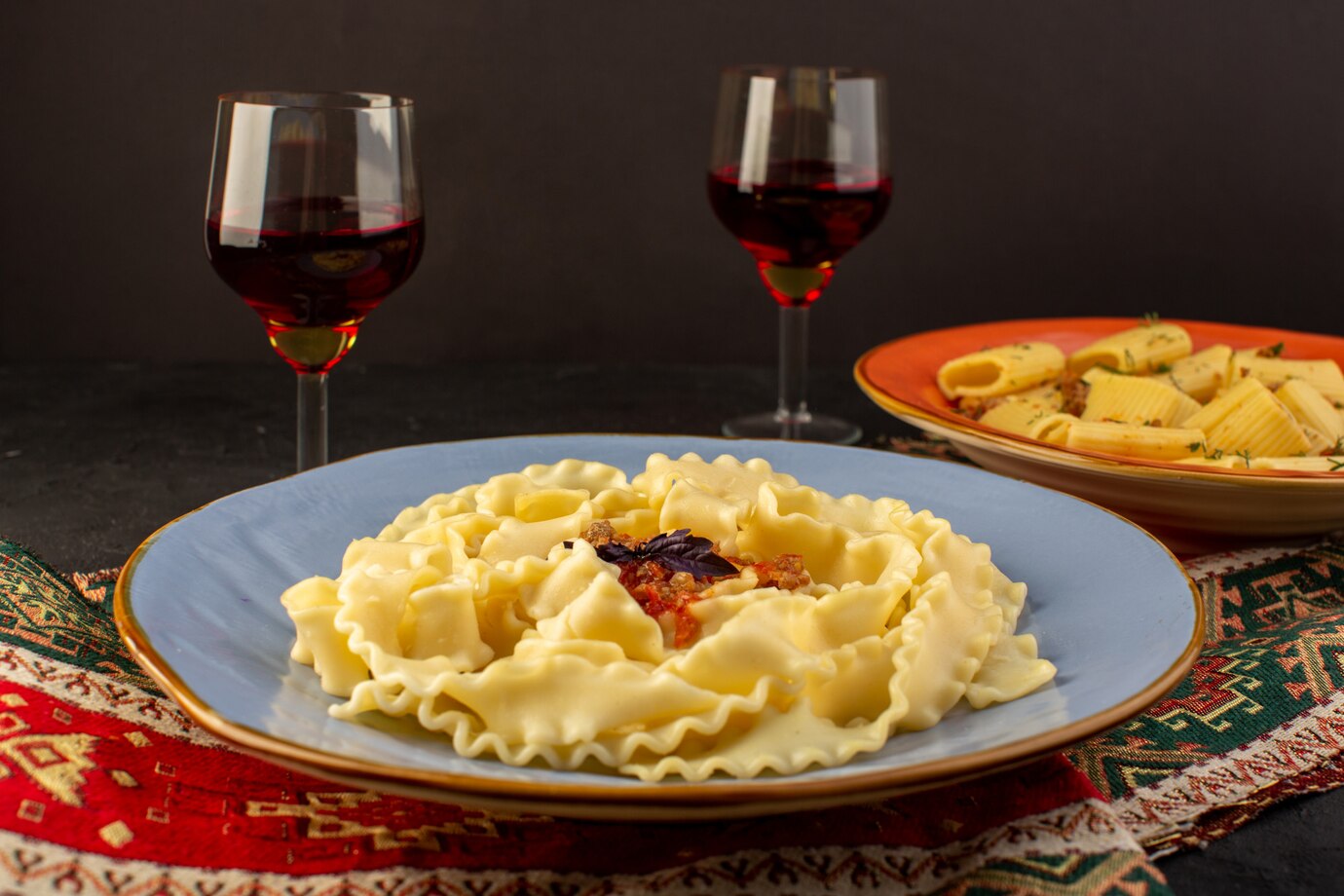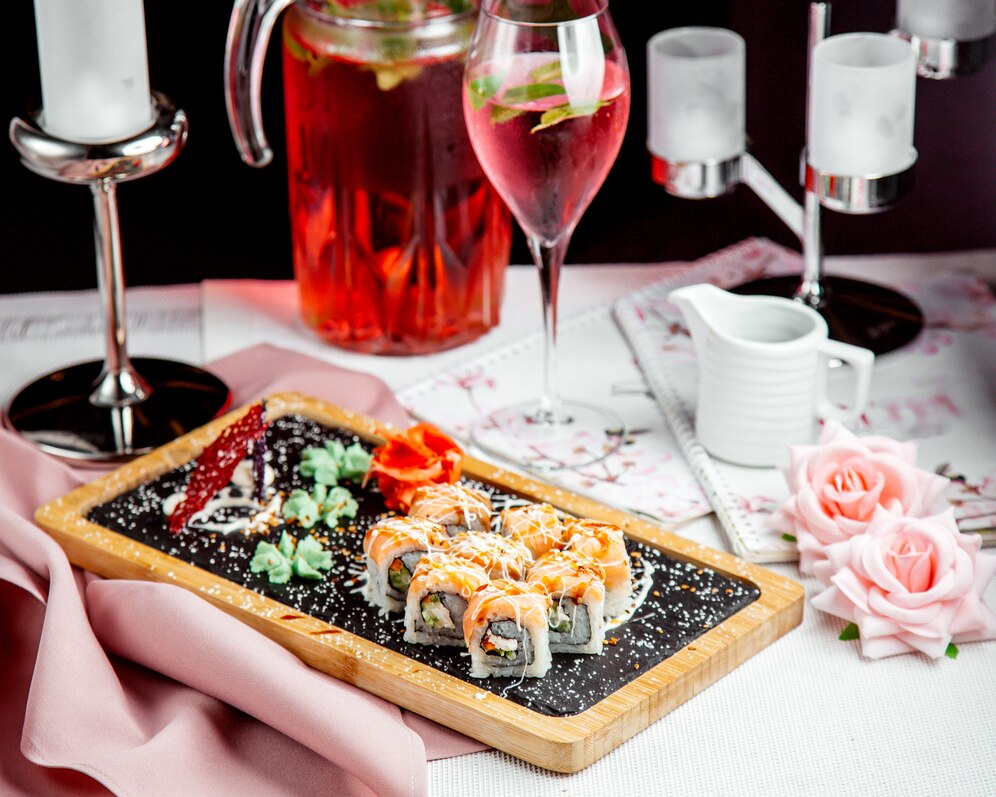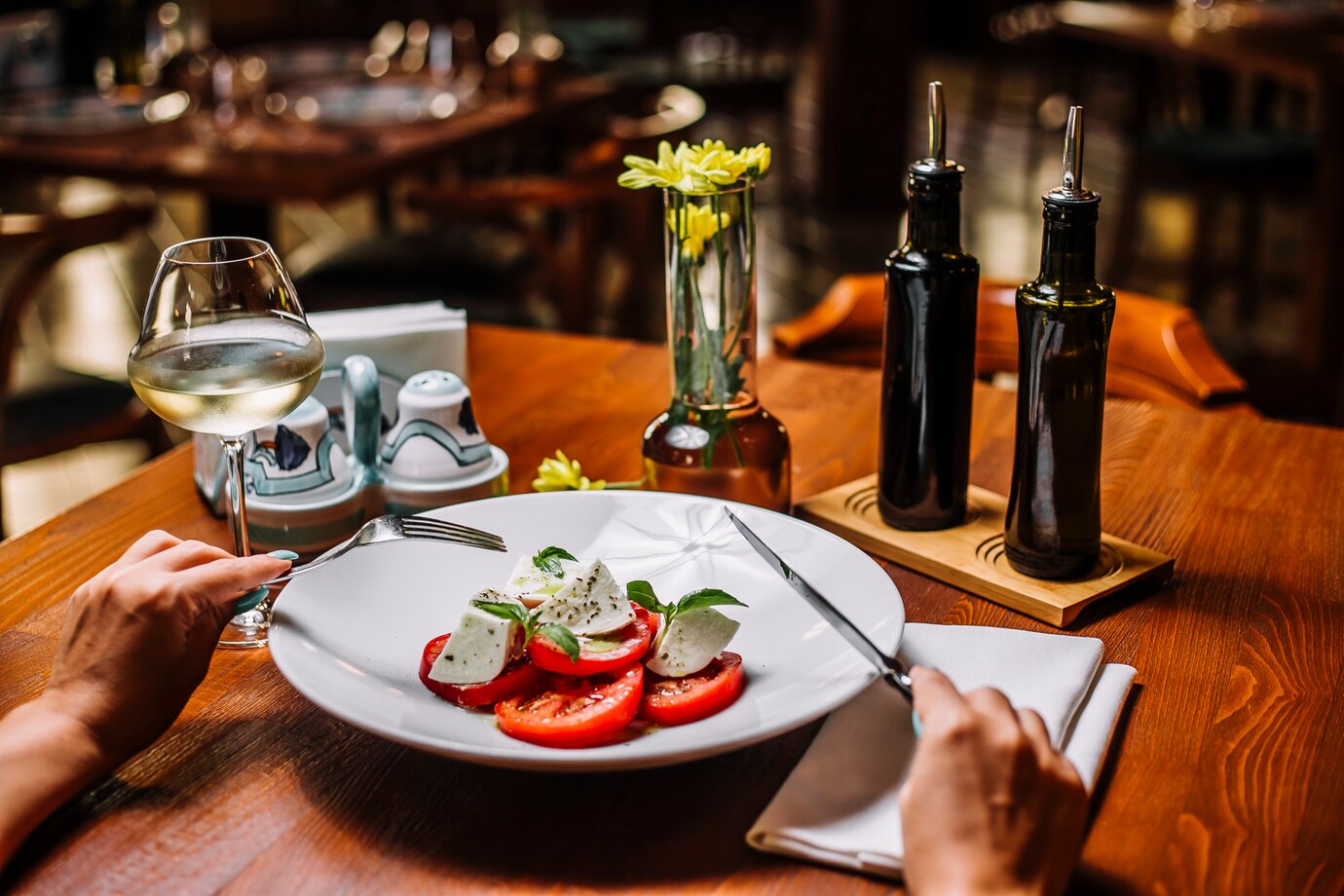The Food Blog

How to Pair Wine with International Cuisines
Again, pairing is the magic here. You upgrade the dish and the drink as a symphony offal, making the experience a special moment. With this knowledge, you can elevate an everyday meal to something extraordinary if you’re eating Italian pasta, spicy Indian curries, or Japanese sushi, choosing the right type of wine can even out flavours, bring forward important components, and help you have a more enjoyable meal.
Core Concept
Wine pairing is an art, with many elements to consider such as acidity, tannins, sweetness and body. Different cuisines require different methods as the types of spices, cooking methods, and ingredients vary widely between cultures. The general rule is that flavours in a dish should either complement or contrast the characteristics of wine.
Key considerations when pairing wine with global dishes:
- Acidity: Wines with high acidity cut through fatty and rich foods, making them ideal for creamy or fried dishes.
- Tannins: Red wines with high tannins work well with protein-heavy meals, helping to balance the dish’s richness.
- Sweetness: Sweeter wines can tone down spicy foods, making them excellent choices for cuisines with heat.
- Body: Light-bodied wines pair well with delicate dishes, while full-bodied wines complement hearty meals.
- Regional Pairing: Wines from the same region as the cuisine often pair naturally due to shared traditional flavours.
Step-by-Step Guide: Pairing Wine with Different Cuisines
Italian Cuisine

- Best Wines: Chianti, Sangiovese, Barolo, Pinot Grigio
- Why: The acidity in these wines complements tomato-based dishes like pasta and pizza.
- Example Pairing: A bold Barolo pairs well with rich beef ragu, while Pinot Grigio is perfect for seafood risotto.
- Extra Tip: Sparkling Prosecco is great for creamy pasta dishes like fettuccine Alfredo.
French Cuisine
- Best Wines: Bordeaux, Chardonnay, Sauvignon Blanc
- Why: French wines naturally pair nicely with traditional French dishes due to regional compatibility.
- Example Pairing: A crisp Sauvignon Blanc enhances goat cheese salads, while a full-bodied Bordeaux complements beef bourguignon.
- Extra Tip: Burgundy Pinot Noir is excellent for delicate dishes like coq au vin.
Spanish Cuisine
- Best Wines: Rioja, Albariño, Tempranillo, Cava
- Why: These wines highlight the smoky and spicy elements found in Spanish cuisine.
- Example Pairing: Albariño’s acidity is excellent with seafood paella, while Rioja’s tannins stand up to chorizo.
- Extra Tip: Sherry pairs exceptionally well with tapas like olives, jamón, and Manchego cheese.
Indian Cuisine
- Best Wines: Riesling, Gewürztraminer, Syrah, Zinfandel
- Why: Slightly sweet and fruity wines help balance the heat and spice in Indian dishes.
- Example Pairing: A semi-sweet Riesling pairs beautifully with spicy chicken tikka masala, while Syrah works well with lamb curries.
- Extra Tip: Avoid high-tannin wines like Cabernet Sauvignon, as they can intensify spice.
Japanese Cuisine

- Best Wines: Sake, Champagne, Sauvignon Blanc, Pinot Noir
- Why: The umami in Japanese food pairs well with wines that have a high minerality and delicate structure.
- Example Pairing: Sauvignon Blanc matches well with sushi and sashimi, while Pinot Noir enhances teriyaki dishes.
- Extra Tip: Sake is a traditional choice and comes in varying sweetness levels to match different dishes.
Mexican Cuisine
- Best Wines: Zinfandel, Malbec, Sauvignon Blanc
- Why: Wines with bright acidity and fruit-forward profiles complement spicy and smoky Mexican flavours.
- Example Pairing: Zinfandel balances the smoky heat of chipotle dishes, while Sauvignon Blanc refreshes the palate after tacos.
- Extra Tip: A chilled rosé pairs beautifully with guacamole and seafood ceviche.
Middle Eastern Cuisine
- Best Wines: Grenache, Syrah, Viognier
- Why: These wines complement the bold spices and grilled meats common in Middle Eastern dishes.
- Example Pairing: A robust Syrah pairs well with lamb kebabs, while Viognier complements spiced rice dishes.
- Extra Tip: Orange wine is an excellent pairing with dishes like hummus and falafel due to its complexity.
Chinese Cuisine
- Best Wines: Riesling, Pinot Noir, Syrah, Chardonnay
- Why: Chinese cuisine balances sweet, sour, salty, and umami, making versatile wines a good choice.
- Example Pairing: Off-dry Riesling complements sweet and sour pork, while Pinot Noir pairs well with Peking duck.
- Extra Tip: Try a bold Syrah with Szechuan dishes to contrast the spice.
Thai Cuisine
- Best Wines: Riesling, Sauvignon Blanc, Gewürztraminer, Rosé
- Why: Thai food often combines sweet, sour, spicy, and salty elements, requiring wines with high acidity and slight sweetness.
- Example Pairing: Gewürztraminer pairs well with green curry, while Sauvignon Blanc enhances lemongrass-infused dishes.
- Extra Tip: Champagne complements the fried and crispy textures of Thai appetisers.
Pro Tips
- Regional Harmony: When in doubt, choose wines from the same region as the cuisine.
- Balance the Intensity: Match the weight of the wine with the richness of the dish.
- Experiment: There are no strict rules—trust your palate and try different combinations.
- Consider Cooking Methods: Grilled foods pair well with smoky reds, while steamed dishes suit light whites.
- Temperature Matters: Serve reds slightly below room temperature and whites well-chilled for the best experience.
Common Mistakes to Avoid
- Ignoring Acidity Levels: Low-acid wines can taste flat when paired with highly acidic dishes.
- Overpowering Light Dishes: Full-bodied wines can overshadow delicate foods.
- Forgetting Sweetness Balance: A dry wine with a sweet dish can taste overly bitter.
- Not Considering Spice: High-tannin wines can clash with spicy foods, intensifying heat.
- Serving Wine at the Wrong Temperature: Over-chilling or serving too warm can mute a wine’s flavours.
FAQs
Q: Can I pair red wine with fish?
A: Yes! Light reds like Pinot Noir pair well with salmon and tuna.
Q: What wine works best with spicy food?
A: Slightly sweet wines like Riesling and Gewürztraminer help counteract spice.
Q: Is white wine always better with cheese?
A: Not necessarily—bold reds pair well with aged cheeses, while whites suit soft cheeses.
Q: Should I always follow traditional pairings?
A: No, wine pairing is subjective—explore and discover what works for your taste.
Perfecting Your Wine Pairing Skills

Mastering wine pairings with international cuisines improves your meals and wine experience. To create unforgettable dining moments, understand key principles, try different pairings, and consider your tastes. Classic combinations or new finds can elevate any dish. Cheers to finding the perfect wine and food match!









